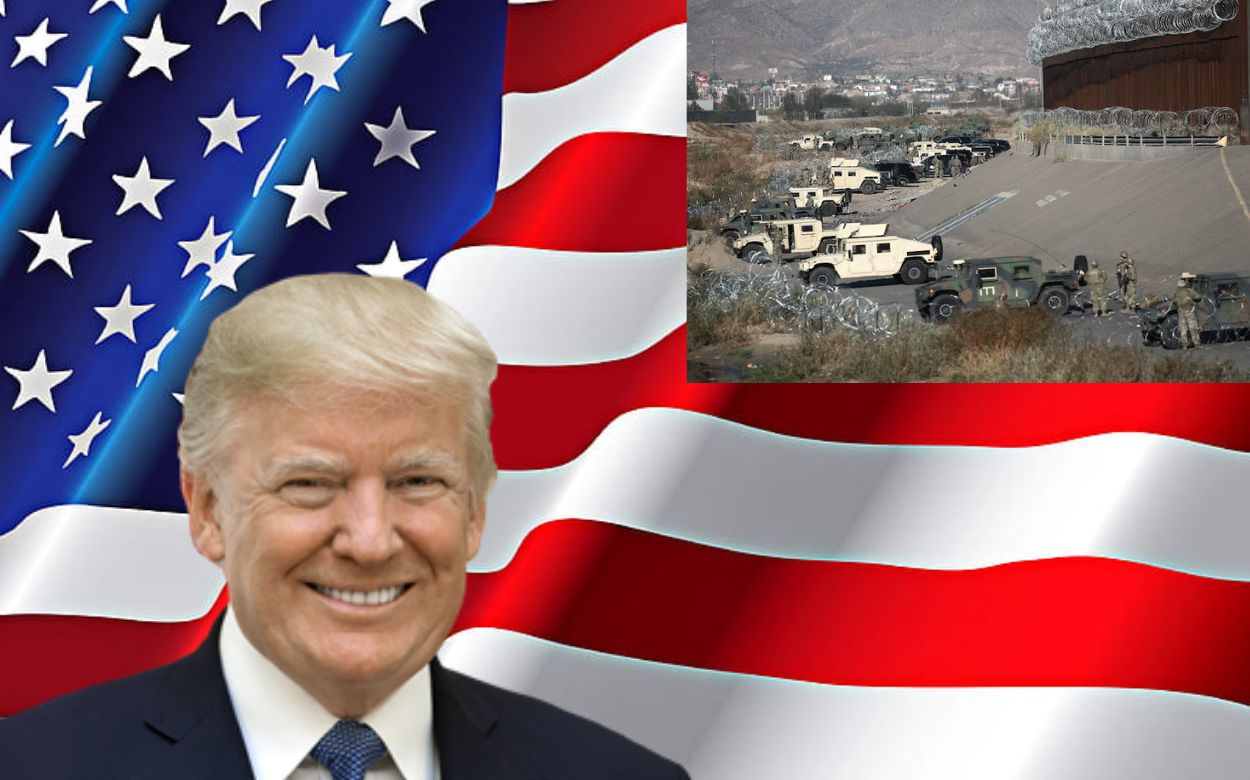Trump’s Shocking ‘National Emergency’ Plan: Military Action & Mass Deportations Coming Soon
The Trump administration’s plan to utilize active-duty U.S. military members to assist with the mass expulsion of undocumented migrants appears to be similar to the assistance role that troops provided along the US-Mexico border in 2018 and 2019 during the previous Trump administration. During his 2024 campaign, President-elect Donald Trump frequently mentioned military soldiers as part of his pledges to aid with deportation. However, how they would do so under current legal authorities remained unclear. On Monday, however, Trump announced that he intended to declare a national emergency to fulfill his campaign promise.

Trump’s Mass Deportation Plan:
“They’ll be used for non-enforcement duties such as transportation, whether on the ground or in the air, infrastructure, building, and intelligence,” Homan stated in an interview with Fox Business Network. U.S. Immigration and Customs Enforcement (ICE) officers who do those tasks might be replaced by military soldiers “because it does not require immigration authority,” Homan added.
He also defined the military’s role as a “force multiplier to take more agents, put them on the streets where we need them,” and suggested that the US military may assist in flights returning detainees to their home nations. “We’re hoping DOD will help us with air flights because there’s a limited number of planes ICE has contracts with, so DOD can certainly help with air flights all across the globe,” it was said.
Homan’s description was remarkably similar to the previous active-duty deployment in 2018 and 2019 during Trump’s first term, which aided US Customs and Border Protection (CBP) when migrant caravans from Central America approached the US border.
The mission was ordered in October 2018 and resulted in the deployment of 6,100 active duty personnel to the border, which was quickly followed by Trump’s declaration of a national emergency, allowing the US military to assist in constructing segments of the border wall. Pentagon officials underscored that the thousands of active-duty troops deployed to the border would only support federal law enforcement and would not perform law enforcement tasks. The active-duty troops joined 2,350 National Guardsmen who had already assisted CBP in their states of California, Texas, and Arizona.
Initially, the active-duty forces’ goal was to build accommodation for more CBP workers arriving in the region, provide medical support, fly CBP personnel throughout the border region, and construct 70 miles of new hurdles and security barriers for the 22 ports of entry. Military police units were deployed to protect military construction contractors operating along the border, and they were the only forces authorized to carry firearms throughout the deployment. What was planned to be a 45-day mission was prolonged and continues to this day, albeit in a modified form and with significantly fewer participants than in 2019.
Following the swift completion of the first mission goals, the Pentagon accepted a new Department of Homeland Security request to establish an unarmed quick-reaction force to assist CPB with riot control in the event of a migrant rush at a port of entry.
Active-duty troops’ roles were expanded in April 2019, allowing them to assist in driving high-capacity CBP vehicles to transport migrants, provide administrative support, such as heating, meal distribution, and monitoring the welfare of individuals in CBP custody, and provide legal assistance to ICE. The 6,100 active-duty troops were deployed to the border by existing authorities. Instead, Trump declared a national emergency in early 2019 to allow the United States military to assist in constructing border wall segments, which was one of his key campaign pledges.
The National Emergencies Act authorizes the military to carry out new military construction projects not designated by Congress, but only if already appropriated monies for such projects are used. Ultimately, the Pentagon could deploy $6.1 billion in funding for the wall, including $3.6 billion in cash shifted from other projects and an additional $2.5 billion in anti-drug initiatives.


Comments are closed, but trackbacks and pingbacks are open.